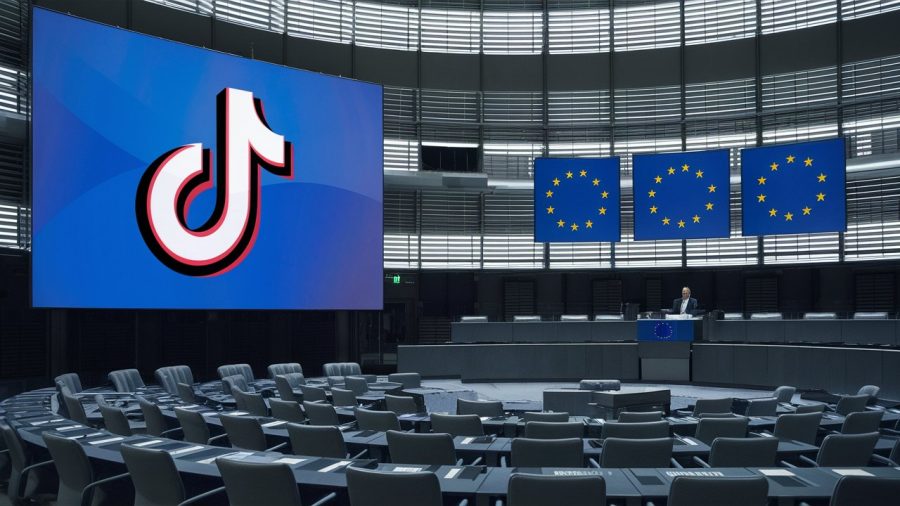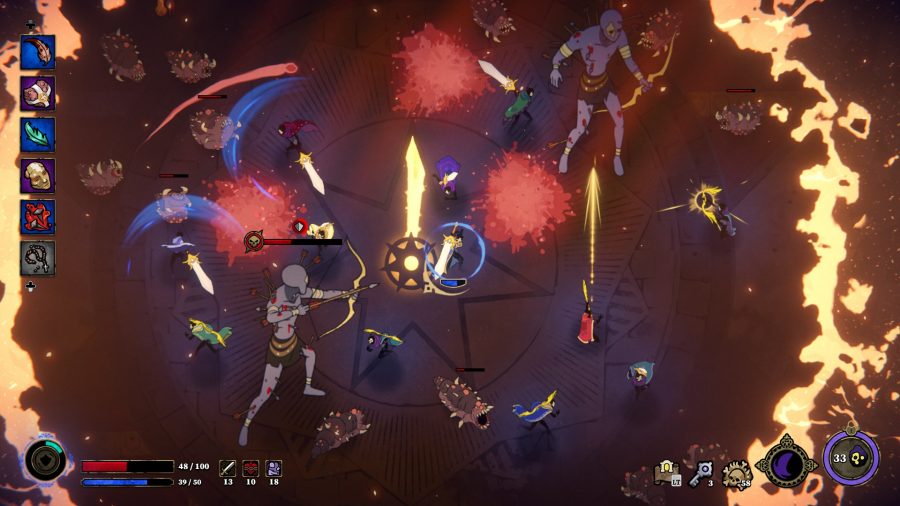Read/Write Web is pleased to bring you this special feature, an interview with software pioneer Marc Canter. Marc is one of the founding fathers of multimedia, having created tools and content in the medium since the late 70’s and early 80’s. He formed a company called MacroMind in 1984 and released products such as VideoWorks and Director. In 1991 MacroMind merged with 2 other companies to form Macromedia. Marc then left Macromedia to pursue his own interests and during the 90’s he launched a series of innovative ventures such as an interactive music video performing ensemble, a cyber theme restaurant called ‘MediaBar’, and a tv pilot and website called ‘The Marc Canter Show’. His current project is a company called Broadband Mechanics, which among other things is developing a ‘Digital Lifestyle Aggregator‘ based on open standards.
This interview was conducted over the course of a week, at first by email and then by phone.
Richard: Marc your education and early years were devoted to music, ranging from opera to blues to electronic music. Then in 1984 you started a software company called MacroMind, which intriguingly you labeled a “software rock and roll band”. Can you explain what you meant by that phrase? Were you performing music as well as creating software? How did the two activities mix – performing and software development?
Marc: This statement implied that making software is an art and that we were focused on being the creators of the process. We had hired the Wm. Morris agency to be our agents. The idea was that software companies were publishers and that they needed the talent – which was us. That was the essence.
Now mix in black leather jackets, plenty of great energy, a band concept (of each of us doing a particular role) and a very hot market – which grew into the leading market in the world – and you’ve got the equivalent of the Beatles in Hamburg in 1962.
Another angle on this is that we were doing creativity tools – which became known as multimedia. We believed (and still do) that it’s just as wrong to be an artist as a musician. Those are arbitrary titles, based upon archaic technology – such as violins and paintbrushes. We foresaw multimedia as a new art form to merge the medias together – so you could paint with the violin and make music with the paintbrush.
Richard: I love the analogy of the Beatles circa 1962 – The Silver Beatles! I remember reading about how The Beatles played gigs in Hamburg before they got famous and the crowd was pretty hostile – John would get into fights on stage etc! I’m sure it wasn’t that wild for you, but tell us what you got up to in the 80’s as “software rock n’ rollers”.
Marc: Well folks would crowd stand by the side of the stage and wait for me to come down after a speech – but that was about it. We were visual thinking guys. We believed that you had to SEE multimedia to understand it. We once brought this 10,000 lumens Hughes light valve projector into the booth (which required a forklift to get it there!). We’d blast it out so that people could see the best video projection they’d ever seen in their lives! Basically we invented the business of multimedia presentations. We bootstrapped our company by doing kiosks, training disks, rolling loops, production demos. You have to understand that this was all before Powerpoint. We were taking video game technology and applying it to business.
Our tradeshow booths were one of the first booths that people would crowd around and clog up the hallways to see. This is common nowadays, but back then it was a new phenomenon.
But the key thing we did instead of spending our money on glossy ads and playing traditional marketing games, was to throw parties! I stayed out on the road on the trade show and conference circuit and at every show or conference I’d throw a party. These would not start till about 10pm, so it would be the last party after all the other parties. From 6-9pm there’d be the traditional, stuffy reception parties. Then there was our party – beer in the bathtub, chips and candy, smoke filled suite, blaring music, no bartenders! And at our parties we made sure people would see our products working – because they were multimedia products and this very often was the first time people got to see multimedia.
So we took an upbeat partying approach to things. We used to rent cadillacs and go off to other peoples parties in them. We wouldn’t allow any marketing scum. We were creative software folks, at a time where there were a lot of staid boring people in the business. We were always the upbeat folks.
Richard: How many other people were in your circle at this time?
Marc: The industry was a lot smaller then. Probably 1/100th the size. So we focused on the inner cognoscenti. The press, the analysts, the influencers. We’d often talk about dropping a pebble in a pond – to start a Tsunami.
There was a small group of multimedia developers by 1988-89. At conferences, I was on panels with word processor guys, printer utility people, dial-up modem software vendors, Microsoft and Apple folks, and so on – but we were the only graphics people. We saw software as an art form, not a science. At the time, the business press were talking about technical stuff – like the move from the 286 chip to the 386 chip. But I’d be talking about graphics, audio, multimedia, cd-roms, the future – they really dug me.
Richard: I’m interested in the mix of Art and Technology that was a defining feature of your early career. The products you developed, such as SoundVision and VideoWorks, enabled ordinary people to create “art” using computer software programs. It seems like that kind of artistic bent in software products is just coming back into fashion – products like Apple’s GarageBand which enables people to record music and Microsoft’s Windows Movie Maker which enables people to create home movies. Do you see those sorts of products as being direct descendents of the Art-enabling software that you created 20 years ago? Do these new products live up to what you envisioned?
Marc: Yes, but we’ve got along way to go. For a number of reasons.
I actually like GarageBand as there’s plenty there to steal. Apple has been stealing from us, from Xerox – from anybody they could expropriate from – since their beginning. All of their research into the digital lifestyle world will be used by all of us – moving forward.
And let’s not forget that Microsoft is building all this stuff into Longhorn – with people, groups, media and messages all being built-in constructs in the system. Both Apple’s iLife and .Mac platforms and Microsoft’s Longhorn will bring ‘digital lifestyle aggregation‘ into the mainstream. That’s what we’ll all be building on top of – five years from now. But nowadays end-users are hopelessly overwhelmed with complex networks to maintain, obscure docs and panel UIs – and in general cannot easily connect all the dots together.
So figuring out the elegant, simple way to do complex things (like author music, videos and slide shows) is what it’s all about. And yes – I do claim partial credit for that. But there were lots of us doing it, back in the 80’s.
What’s been missing, and still is, is a way for average lay people to control and author multimedia. With digital cameras exceeding the sale of analog/optical cameras and with the rise of cam phones, there’s only one way to go with all this – and it’s FORWARD!
As we move down the pyramid of target customers, these tools will merge with the web page, portal and web services and become what I call “the new paradigm of tools”. These new kind of tools will be designed for groups of people, take advantage of many web-based technologies and services, and achieve much of what we’ve been dreaming about for over 20 years.
Richard: We live in a consumer culture – television, movie stars, MTV, etc. But in the early 21st century there are signs that, thanks to computer technology, we’re about to break through into a more creative culture where everyday people produce media as well as consume it. Weblogs are a good example of this new culture, because they allow normal people to publish to the Web. But this creative culture is something you’ve been pushing for a long time, since before the Web and maybe even before PC’s! I’m interested to know what it was like trying to convince people in the 70’s and 80’s to use technology to create as well as consume. How far have we come in regards to enabling normal people (i.e. non-geeks) to create their own art, music, writing, etc?
Marc: The phrase that Seb Paquet uses is “personal publishing”, which is the best way to describe it. Jonathan Peterson has a column in Corante called Amateur -which also focuses in on this phenomenon.
What can I say – it’s my life’s goal. Or at least one of them! I was raised thinking of computers as something that could turn 100 synthesizer knobs at the same time. Artists and musicians have embraced digital technology since its inception. All we did at MacroMind was tap into the untold wealth of creativity and excitement that people find when they mouse their way through pixels and dive into sound bytes.
It was a bitch [in the 70’s and 80’s]. Most people thought I was nuts. They couldn’t complain about the long-term goal, but the question was: how do we get there?
Well Macromedia was the first step, Broadband Mechanics the second. I suspect that I’ll be doing The Marc Canter Show – once I’m ‘done’ with Broadband Mechanics – and archiving that until my death.
I remember sitting on panels trying to describe the future to a room of IT people or Japanese hardware engineers. It was hilarious sometimes. But no matter what, there’d ALWAYS be at least 3 or 5 people who would grok it and come up to me after – totally jazzed. I met some of those people again during the 90’s. They often came up to me and said something like: “I remember seeing you speak at a panel in 1985 – it changed my life.” THAT’s what it’s all about! I can’t do it by myself, so early on I learned the power of being able to proselytize. I learned from Steve Jobs and Guy Kawasaki – but I wasn’t pushing some limited vendor’s vision. I emphasized that everyone out there will grok this in their own way – contribute as they may. That’s at the essence of all this.
Richard: You mentioned [on the phone to me] that people nowadays are able to assume that multimedia is part of their lives – computers, mobile phone pics, i-pod, etc. Can you give me an example from the 80’s of how people couldn’t assume that technology was part of their lives back then, of how alien this type of software was to ‘normal’ people.
Marc: When we gave a demo, we would rate the level of the demo by how many trips out to the car it took – because no one had any equipment. So if I wanted to show someone a demo of our software, I had to usually have at least two trips out to the car – monitor and power cables in a box in one trip; the computer hard drive and some more boxes of stuff in the second trip. If you had anything fancy, like a scanner or studio things, then it would be 3-4 trips out to the car! No one had a Mac II then. Nowadays you just use a browser, or pop a CD-ROM into a PC – but back then it wasn’t that easy just to attach a hard drive, so most of the time we had to bring a computer with the hard drive.
Richard: Can you tell me some stories of what it was like in the software business in the 80’s, before the Internet and the Web took off in the 90’s?
Marc: We did some interactive adverts for Microsoft around 1985. Picture this: a bicycle rider scrolling across your screen and he’s pulling a Microsoft Works spanner – really crude, low resolution art work. We achieved this cheap Disney effect of the bike going in one direction and the street scrolling in another direction. We only had 128k memory to play with, but we were using techniques from the video game industry. These adverts played in a “rolling kiosk” from 1985. Because Microsoft was competing with Apple, our advert got played in every single Macintosh store around the world. This all shipped on a 400k floppy disk – the whole thing, including the player and all the graphics. We actually made more money doing demos than selling the software!
Every Macintosh from 1986 shipped with our code on it – it was like a training disk, that showed you how to use the Macintosh. We’re the guys who helped invent animated tutorials, animated multimedia presentations – and that’s how we bootstrapped the company. That was completely new – all these ad agencies and designer types then got in the business of doing these demos. When VideoWorks came along, there was a whole new world of people being able to create animated presentations and training disks – which led to the so-called multimedia content market. Every time I’d go do a demo or a speech somewhere, I’d bring a couple of cases of software and I’d sell it at the back of the room. This was when mail order was a minority activity.
Richard: Was this in Silicon Valley?
Marc: I was traveling all over the world. I’ll paint you a picture of what it was like then. During the 80’s there was a debate going on about the merits of GUI’s (graphical user interfaces) vs command line interfaces. Even up to the release of Windows 3.1 and then Windows 95, there were still people arguing about it. In 1985-86, GUI’s were considered a complete joke. In 1987-88 people started to consider GUI’s more seriously, with the release of the Mac II and Microsoft announcing Windows. In 1989 the tide had turned and by 1990-91 it was exactly the opposite – by then those who argued for command line interfaces were considered weirdoes! So throughout that era I was giving speeches completely representing the GUI side of the argument. Not only was I winning the multimedia argument, I was winning the GUI argument – and a lot of it came to fruition, came to pass, by the end of the 80’s.
Richard:You’re famous for inventing tools for creating interactive content. Yet content has always been as important to you, if not more so, than the tools. I’ve read that one of the reasons you left Macromedia in 1991 was because Macromedia showed no interest in entering the content market. They just wanted to make the tools. Fast forward now to 2004 and “aggregation” tools and services seem to be all the rage – the obvious example is RSS Aggregators, but if you think about it companies like Google and Yahoo are essentially content aggregators. One could also extend the analogy to social software – e.g. Orkut could be viewed as a “people aggregator”. Was content aggregation the type of thing you wanted Macromedia to tackle back in the early 90’s? Did they miss the boat in regards to content?
Marc: Macromedia misses the boat on so much – it’s pathetic. But that’s what happens when you have caretakers who take over a company. There’s no innovation going on there and that’s what hurting them the most.
It’s funny – do you know/realize that we have an open source product called the PeopleAggregator.com or did you just dream up that line? [Richard: I did just dream up the line, as I’d forgotten Marc had a product called PeopleAggregator. But maybe it was in my subconscious!]
Two ways to answer this……….
a) The evolution of tools has brought us to the point where the entire business models are changing and the essence of what tools are has shifted from something a professional uses, to something everyone will need to know how to use. A key part of that is the amateur stuff we alluded to earlier. Everyone takes photos, corresponds, has vacation videos, baby pictures and albums – the list goes on and on. So the content in our lives will get treated like content from Hollywood, World news, sports, etc. Disseminating this, making it easy to author and store, indexing it, applying knowledge management techniques to humans – is all part of it. New kinds of tools.
b) The other way to answer this is to state the three underlying principles which I use moving forward – when designing ‘digital lifestyle aggregators‘, which is what my company intends on being a leader of:
Integration, Aggregation and Customization.
It’s these three components, approaches, tenets, attitudes that will govern us – moving forward – when designing DLA’s.
There’s also a metaphor I used in the early to mid 90’s = “San Luis Obispo”. Hollywood and Silicon Valley represent the #1 and #2 biggest exports the U.S. has. Major, major, major revenues and means of influence. It’s modern day imperialism – own their minds and their pocketbooks will follow. Both industries talk a lot of shit about convergence and the future, but in fact spend little time actually trying to understand each other. The proof is in the pudding. Ever wonder why they both keep fucking up so bad?
The guy in charge of strategic technology in Hollywood is some lawyer who wrote the convergent business plan, has a laptop and an AOL account. He’s the techy, the nerdy Hollywood exec. In Silicon Valley they wouldn’t know quality content if you hit them over the head with it. They use their brother-in-law for jingles, creative issues and ‘content’. The C word is what they allude to up here.
So both those worlds are full of shit. They know doodley about anything besides their own business. So I say they both need to get off their high horses and head to San Luis Obispo – approximately halfway between the two. They’re both wrong, let’s get on with it. But it’s new – it’s not Silicon Valley OR Hollywood.
Richard: In the software world, there’s always a trade-off between what content or functionality people would like and actually having the infrastructure or tools to make it reality. Interactive TV is perhaps the classic example, where we dream of being able to personalize television and interact with it. In your experience, do you feel we’re getting closer to fulfilling the dream of interactive multimedia (not just TV), or are the infrastructure challenges just as hard now as they were in the 80’s and early 90’s?
Marc: They’re certainly just as hard – but infrastructure isn’t the only challenge we face! We gotta change our attitude towards how we foist new technology on people!
We still think that each new generation of technology will somehow magically solve people’s problems. But as we know – new behavior patterns are adopted ONLY when the technology proves itself – so there’s a vicious catch-22 going on. American Idol taught Americans what SMS is all about. And Janet Jackson’s tits that got folks grokking TiVO!
And it’s about people. The smart ones retire when they get rich, because it’s a hell of a business to try and stay in. So I find we’re constantly having to educate execs as to what’s up – so that they can make the right decisions.
But I’d be really cynical to say we haven’t made progress. You learn from your past mistakes – and I certainly have – so I’ve learnt how to pitch this stuff better nowadays. How to round up the right group of folks – who can play that old school game, suck up to those execs and still achieve progress!
This has almost nothing to do with technology and everything to do with white males. As the infrastructure and technology becomes more and more of a commodity and the vested interests of these white males line up with the needs and goals of Interactive media (read: greed) – then it’ll happen. It has to happen.
It’ll be decentralized – but made up of hybrid, meta networks – that still rely upon centralized servers. It’ll be open source and new, yet it will always have some degree of proprietary-ness – how else does someone make a buck? It’ll be a model where amateur stuff (like Hot or Not and VoyeurWeb) can sit along side Hollywood stuff.
But MOST importantly it’s something that enterprise and government/education adopts, because that’s the only way we’ll achieve REAL critical mass and lower the costs of the infrastructure – so that EVERYONE has broadband and that huge mega terabyte servers are in everyone’s homes.
Richard: Your current main project is a company called Broadband Mechanics, which I understand is built on open standards. I’ve read you discussing various products – WebOutliner, Digital Lifestyle Aggregator, Sweet Suite, Hubbie. Can you tell us which one specific product you’re most excited about and when it will be released to the public?
Marc: I’ve been working for both my company and the open source world to help establish open standards like FOAF, and new standards for OpenReviews, OpenEvents and ThreadsML. You could even imagine standards called OpenRecipes, OpenResumes and a People’s DNS.
The current memes are:
– PeopleAggregator.com – open source social network built upon FOAF
– WebOutliner.com – still working out the kinks. It’s an open source online outliner.
– Digital Lifestyle Aggregator = the future
– Activity based computing – the future after that
– New kinds of tools
Ziff-Davis will be releasing a DLA I designed for them, under the name 1Up.com, around E3 time – May 2004. It’ll be the first example of what the hell it is I’ve been talking about. If you’d have asked me in the past about this, I would have told you that if we didn’t launch one of these things by ‘Dec. ’99 it was all over. But here we are spring ’04 and we’ve barely begun.
Oh and let’s not forget scalable content, multimedia personalization and rich media platforms. Laszlo Systems has the rich media platform.
Richard: In this era of software design, there are so many very smart developers out on the Web. Look at the number of things that people have developed off their own bat – e.g. Phil Pearson’s Topic Exchange, Paolo and Matt’s K-Collector, Kimbro Straken’s Syncato, Dave Sifry’s Technorati – the list goes on and I haven’t even mentioned all the Mozilla projects being developed! But I often wonder if what the Web needs more of are people who can produce and manage all these new software projects. People who can bring together a group of individuals, provide a vision, and lead and co-ordinate them to create something out-of-this-world. You seem to be one of the few people who have managed to do this over the years (Mitch Kapor is another one who comes to mind). What advice can you give to Web people who may not be programmers, but want to help create visionary new software? What sort of attributes does the next Marc Canter or the next Mitch Kapor need to develop successful Web products and services?
Marc: Thank-you. I agree that there’s an incredible lack of leadership and vision, when it comes to leaders in the open source world. It seems like many are afraid to step up because they may come off looking like idiots, savants, greedy capitalists or some other weird form of “marketing guy”. Both Mitch and I had cred before this era – so it’s easy for us to morph.
To help establish open standards: I blog, give speeches, mouth off in public and in general try to fill in some of the vacuum surrounding open source leadership. I’m fortunate to have sponsors/clients like Tribe.net, Laszlo Systems and the AlwaysOn Network to help keep me and my family alive while we build the next big thing. I’m someone who has been blessed with being able to help make the world a better place. And I’m not done yet.
As far as where the new ones are coming from or what they have to do, I’d say “believe in the mesh” – the matrix (not the Ashcroft version of the matrix or the movie.) A world of inter-locking components, modules, and standalone platforms that utilize open standards and formats to deliver compelling experiences to end-users.
Face it, most end-users are not nerds – and there’s no way in hell these folks are going to get everything working together. But as long as software people only produce small, isolated modules, features of standalone whatever-the-hells – we’ll never get there.
So it’s ALL about inter-connecting, integrating, aggregating and providing appropriate levels of customization.
Richard: Thanks Marc for your time, I really appreciate it!
This interview was conducted by Richard MacManus, between 21-29 March 2004.










